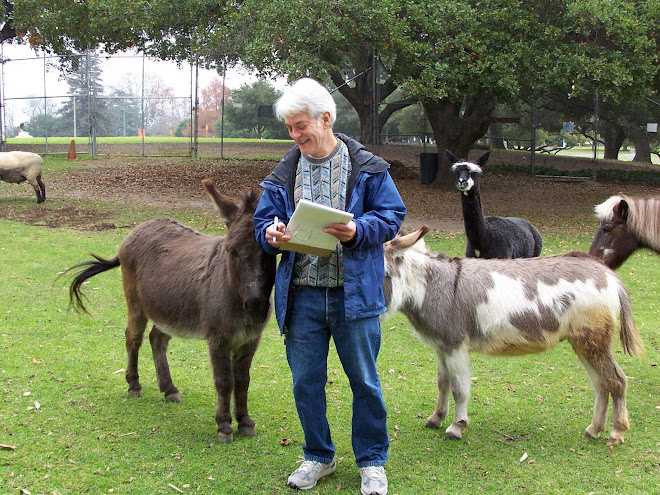
More than 320 members of the Class of 1958 (class motto: "None so great as '58") attended their 50th reunion Oct. 3-5, the largest 50th reunion in Cal history.
They cheered when basketball captain Earl Robinson led them in the Cal spell-out, cried when they sang "Hail To California" and reminisced about what Cal was like back in the day.
"One difference is that Telegraph Avenue went all the way to Sather Gate," said reunion chairman Roger Samuelsen. "There were restaurants across the street from the Administration Building (now known as Sproul Hall), where the student union is today."
The most popular was Jules' Coffee Shop, where everyone met for a mass kaffe klatch every day at 10 a.m.
"You arranged to not have a 10 o'clock class; and if you couldn't avoid one, you'd take one for which Fybate notes were available," said Gail Follett Hughes. "I don't know why, because the coffee was terrible. It tasted like metal."
At Sather Gate the students bought ice cream from the Crunchy Munchy Man ("Cruncy Munchy/Great after lunchy," the jingle ran). And before football games at Memorial Stadium they bought frozen fruit ices called Gremlins, which the guys in the men's rooting section laced with vodka.
(Yes, there were separate rooting sections for men and women.)
Social life revolved around fraternities and sororities, with elaborate ceremonies and rigid rules.
"You couldn't wear blue jeans or Bermuda shorts in public, or you'd be 'campused' the next weekend," recalled Sharon Foster Strong. "And if you weren't inside your sorority house by curfew, you'd be locked out.
"If you were 15 minutes late, the house president would be wakened. Fifteen minutes later, the housemother would be wakened. And if you still weren't there 15 minutes after that, they'd call the dean of women, and she'd send the police out looking for you."
One of the most elaborate rituals was the pinning ceremony.
"They always took place on Monday nights, which was dress-up night at the sororities, with everyone wearing high heels and hose," said Lynn Springer Pettit. "We would sit around the dining table, trying to guess who was getting pinned.
"A lighted candle, in the color of the boy's fraternity, would be passed from girl to girl until it came to the one who was being pinned. She'd blow it out, and the rest of us would start screaming and congratulating her, and her sorority big sister would pin the pin on her sweater."
Libby Sutton Middleton added, "Then, if she were lucky and her boyfriend belonged to a local fraternity, the boys from his house would gather on our front porch and serenade us."
Strong interjected, "Another difference between then and now: Notice the correct use of the subjunctive."
Meanwhile, Jack Saroyan and Don Kosovac fondly recalled tearing down the goal post after the 1953 Big Game (a 21-21 tie that knocked Stanford out of the Rose Bowl), rushing the crossbar out of Stanford Stadium just ahead of a mob of angry Stanford fans, and driving it back to their fraternity house, Pi Kappa Alpha, in Berkeley.
"And that crossbar is still hanging from the ceiling of the dining room!" Kosovac said proudly.
But it wasn't all hijinks. Then, as now, Cal was blessed with some of the finest professors in the world, including Armand Rappaport teaching American diplomatic history, Raymond Sontag teaching European cultural history, Josephine Miles and Charles Muscatine teaching English, and Richard Aiken teaching embryology.
"Aiken was a consummate artist," said Pate Thompson. "He would create these gorgeous drawings on the backboard that I admired so much, I would come an hour before class and watch him do it."
Patricia Pereira Nielson added, "Rappaport once gave me back a paper and said, 'You didn't tell me anything I didn't already know.' It was the first time I realized that learning is more than regurgitation."
So what does Cal 1958 think of Cal 2008?
"Well, Telegraph Avenue looks dreadful, but the essence of the university is still in great shape," said Strong. "We might not agree with everything that's happened since we graduated, but remember what Clark Kerr said: 'The university isn't here to make ideas safe for the students; it's here to make the students safe for ideas.'"
(This story originally appeared in the Jan/Feb 2009 issue of California Magazine.)














